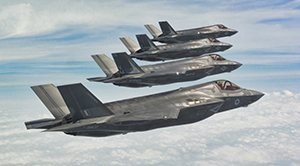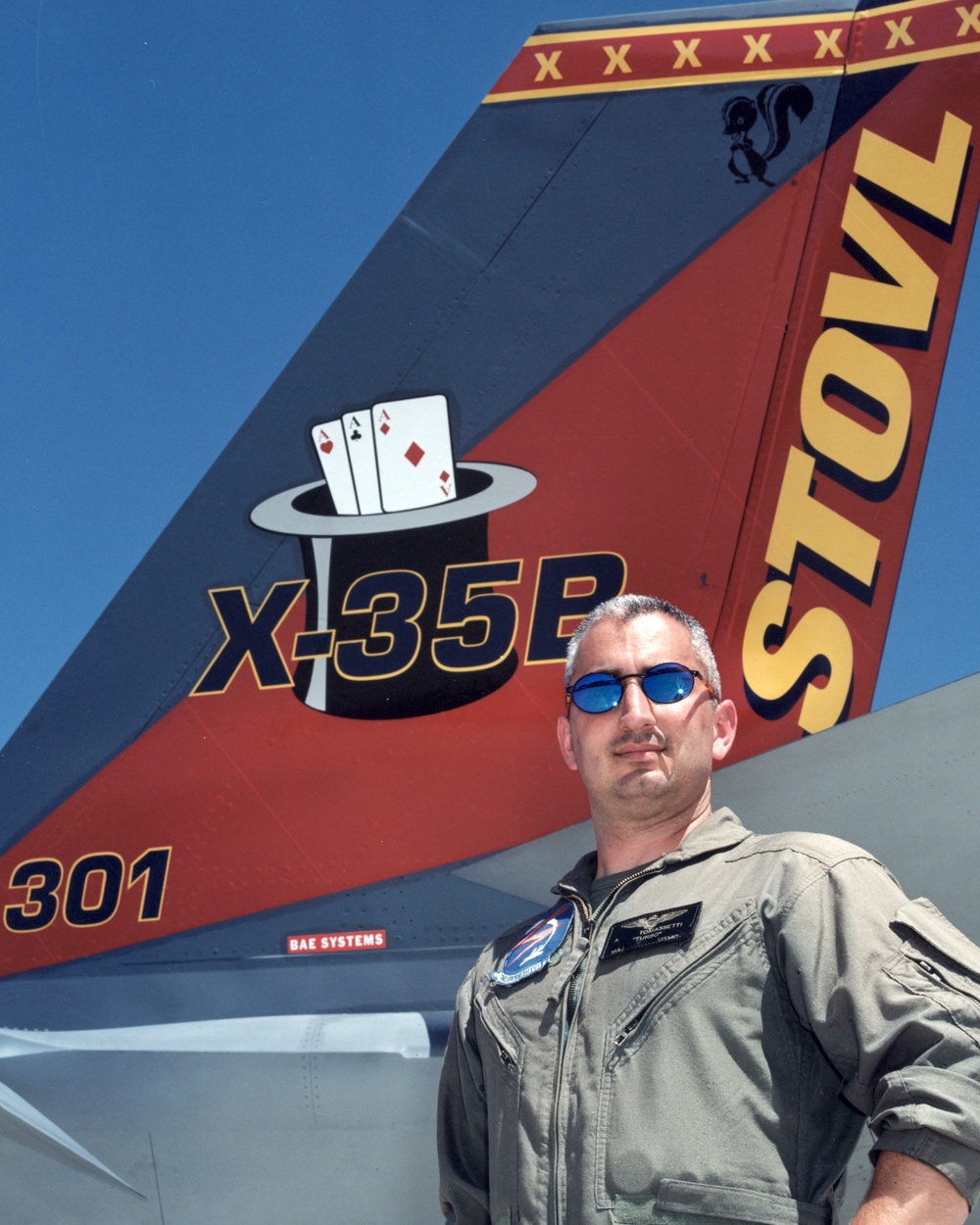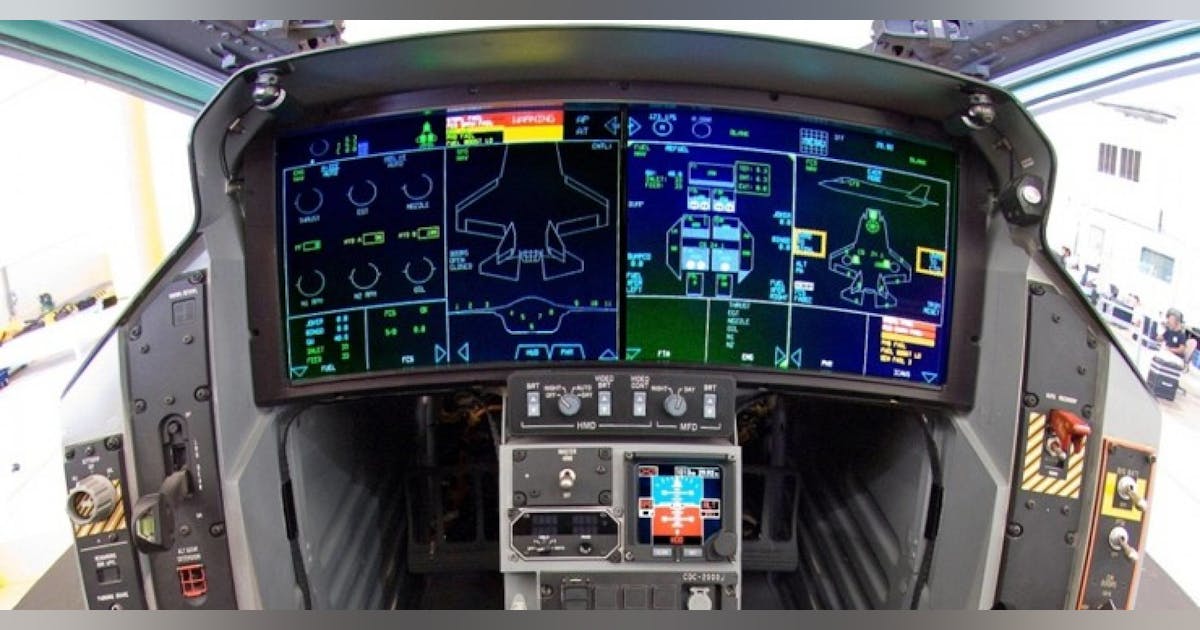Olen puolivakavissani miettinyt että valtio voisi lunastaa pari A330:aa Finnairilta, jonka lautta on nykyisessä maailmantilanteessa liian iso, ja konvertoida ne MRTT/kuljetuskäyttöön kuten Espanja on tehnyt.Kanada ostaa kaksi boomillista tankkeria. 103 miljoonaa maksaa kahden käytetyn (vm. 2015) A330-200 osto muutostyöt.
Niin pieni hintalappu, että pitäisikö meidänkin? Tosin ylläpito on eri asia...
Canada moves forward with the acquisition of aircraft for the Royal Canadian Air Force - Canada.ca
Today, Defence Minister Anita Anand announced that Canada has finalized a contract to acquire the first two aircraft for the Royal Canadian Air Force (RCAF) that will replace and renew the capability currently fulfilled by the CC-150 Polaris fleet and later become part of the Strategic Tanker...www.canada.ca
(hyvä kaksikko, eivät ole pelkkiä leuan louskuttajia)
Install the app
How to install the app on iOS
Follow along with the video below to see how to install our site as a web app on your home screen.
Note: This feature may not be available in some browsers.
You are using an out of date browser. It may not display this or other websites correctly.
You should upgrade or use an alternative browser.
You should upgrade or use an alternative browser.
F-35 Lightning II
- Viestiketjun aloittaja Hejsan
- Aloitus PVM
mechanicus
Kenraali
Mikä logiikka tässä olisi vs. että Finnair myisi omansa markkinahintaan ja PV:lle ostettaisiin esim. vanhempaa A330-200:a markkinahintaan? Finnairin koneet ovat uusia tai keski-ikäisiä ja niissä on hyvä, matkustajakäyttöön soveltuva matkustamon sisutus.Olen puolivakavissani miettinyt että valtio voisi lunastaa pari A330:aa Finnairilta, jonka lautta on nykyisessä maailmantilanteessa liian iso, ja konvertoida ne MRTT/kuljetuskäyttöön kuten Espanja on tehnyt.
Onko tarkoitus
A) Tukea Finnairia maksamalla koneista ylihintaa?
B) Kupata Finnairia myymällä koneet alihintaan?
C) Jotain muuta?
Eikö Finnairin koneet omista joku leasingfirma? Kuulostaa monimutkaiselta järjestelyltä mennä säätämään firmojen väliin.Olen puolivakavissani miettinyt että valtio voisi lunastaa pari A330:aa Finnairilta, jonka lautta on nykyisessä maailmantilanteessa liian iso, ja konvertoida ne MRTT/kuljetuskäyttöön kuten Espanja on tehnyt.
Trimblella on taas hyvää juicea kaikkia kiinnostavasta aiheesta:
 aviationweek.com
aviationweek.com
Pitempi versio jos/kun katoaa muurin taa:
The publicized list of Block 4 upgrades includes several unclassified highlights. For example, Lot 15 jets, which start rolling off the assembly line later this year, come with the Technical Refresh-3 hardware, which includes an integrated core processor for the flight avionics that is 25 times more powerful. Lot 16 aircraft arriving in 2024 and 2025 come with a three times more powerful electronic warfare (EW) processor. And Lot 17 fighters will be delivered after 2025 bristling with 20 EW receivers, a 75% increase, to dramatically boost signal coverage and accuracy....
The APG-81 inside every F-35 comes with 1,676 transmitter/receiver modules. If the APG-85 is delivered with the same number, Northrop’s production system must be able to deliver 261,456 gallium nitride-equipped modules per year. All this must be done without significantly increasing the production cost of the radar.
The Weekly Debrief: F-35 Program Sneaks Major Radar Upgrade Into Block 4 | Aviation Week Network
The program has offered few details of the APG-85, but the upgrade comes amidst an industry-wide transition by AESA radar manufacturers to gallium nitride.
Pitempi versio jos/kun katoaa muurin taa:
The Weekly Debrief: F-35 Program Sneaks Major Radar Upgrade Into Block 4
09 Jan 2023 Steve Trimble
"Five years after Lockheed Martin launched the estimated $15 billion Block 4 Follow-on Modernization program for the F-35, some of its most important capabilities, including possibly a new active electronically scanned array (AESA) radar, are only now coming to light.
The publicized list of Block 4 upgrades includes several unclassified highlights. For example, Lot 15 jets, which start rolling off the assembly line later this year, come with the Technical Refresh-3 hardware, which includes an integrated core processor for the flight avionics that is 25 times more powerful. Lot 16 aircraft arriving in 2024 and 2025 come with a three times more powerful electronic warfare (EW) processor. And Lot 17 fighters will be delivered after 2025 bristling with 20 EW receivers, a 75% increase, to dramatically boost signal coverage and accuracy....
...implication is that a new fire control radar has completed development in total secrecy. The APG-85 is ready to be delivered to operational squadrons inside Lot 17 jets to be delivered later this year. The disclosure completes a sweeping replacement during Block 4 of the F-35’s internal hardware, including first-generation mission systems and second-generation avionics. A future propulsion upgrade will also replace the Pratt & Whitney F135 with a new fighter engine or revamp the existing engine and the Honeywell-supplied Integrated Propulsion Package to deliver more thrust, fuel efficiency and cooling capacity.
The program has offered few details on the APG-85, but the upgrade comes amid an industry-wide transition by AESA radar manufacturers to gallium nitride semiconductors in the transmitter/receiver modules. Raytheon has delivered the gallium nitride-enabled APG-79(V)4 AESA to the U.S. Marine Corps F/A-18C/D fleet, claiming to dramatically increase target detection range with the same size, weight and power. Saab has demonstrated an AESA radar with gallium nitride on the JAS 39D Gripen. Israel Aerospace Industries’ Elta Systems division has also confirmed ongoing efforts to develop a gallium nitride-equipped AESA for fighter radars.
Northrop Grumman has revealed no such plans for the F-35’s APG-81 AESA radar, but the concept must seem tempting. The F-35’s AESA doubles as a fire control radar and a high-power transmitter for the onboard EW system. The capability appears to exist to dramatically increase the performance of the F-35’s primary sensor, distributed aperture system and EW receiver suite at the same time, with the radar able to exploit gallium nitride as a mature commercial technology.
Such a move implies a significant investment in production capacity of trusted microelectronics. Gallium nitride has already migrated into several of the military’s surface radar systems. If included in the F-35 program, the production requirements are daunting. Northrop supplies radars for a Lockheed production system that has a goal to produce 156 F-35s this year. The APG-81 inside every F-35 comes with 1,676 transmitter/receiver modules. If the APG-85 is delivered with the same number, Northrop’s production system must be able to deliver 261,456 gallium nitride-equipped modules per year. All this must be done without significantly increasing the production cost of the radar."
Viimeksi muokattu:
Poiminta vielä yo. artikkelista:
Lot 17 fighters will be delivered after 2025 bristling with 20 EW receivers, a 75% increase, to dramatically boost signal coverage and accuracy.
mechanicus
Kenraali
Mitähän tuolla tarkoitetaan? Mikään kokonailuku lisättynä 75%:lla ei ole 20. Montako niitä EW-vastaanottimia ennen oli?Poiminta vielä yo. artikkelista:
Olympiakasarmi
Kenraali
F-35:stä suunnitellaan ballististen ohjusten torjuntaan kykenevää mallia. Olisiko uudella tutkalla jotain siihen liittyvää käyttöä.

 www.lockheedmartin.com
www.lockheedmartin.com

F-35: The Most Advanced Node in the 21st Century Warfare
In the highly-contested 21st century battlespace, success is determined by the ability to connect and share information across domains.
fulcrum
Greatest Leader
Tämän piirroksen mukaan 10:Mitähän tuolla tarkoitetaan? Mikään kokonailuku lisättynä 75%:lla ei ole 20. Montako niitä EW-vastaanottimia ennen oli?

Einomies1
Respected Leader
Tuskin mitään erityistä, jos ei hypersoonista moodia sittenF-35:stä suunnitellaan ballististen ohjusten torjuntaan kykenevää mallia. Olisiko uudella tutkalla jotain siihen liittyvää käyttöä.

F-35: The Most Advanced Node in the 21st Century Warfare
In the highly-contested 21st century battlespace, success is determined by the ability to connect and share information across domains.www.lockheedmartin.com
 .
.Moderneissa tutkissa on jo pitkään ollut lookdown-shootdown toiminto ja APG-81 kykenee sekin jo yhdenaikaiseen maa/ilmatoimintaan, koska on useita säteitä ja reippaasti kapasiteettia.
Laukaisualustojen tuhoamista painottaisin itse myös, koska se on parasta torjuntaa kun tuhoaa ohjusten vaatiman infran ilmassa, merellä tai maalla. Siinä tarvitaan tiedustelua, valvontaa ja reaaliaikaista tulenkäyttöä (kill-chain). Suomelle hankittavat JASSM ER- ohjukset tuovat tätä kykyä kantaman osalta ainakin. Vielä parempi olisi hypersooninen risteilyohjus, jonka ansiosta vastustajan väistöaika olisi mahdollisimman lyhyt. Ehkä sellainen tulee Pantteriin 2030-luvulla ja saamme sen myös mahdollisesti käyttöömme.
Tuo uutinen kosketti varmaankin pääasiassa uusien interceptorien kehittämistä ja integrointia F-35 koneisiin.
Direct Engagement: The Pentagon’s Missile Defense Review (MDR) states that, “the F-35 Lightning II, can track and destroy adversary cruise missiles today and, in the future, can be equipped with a new or modified interceptor capable of shooting down adversary ballistic missiles in their boost phase.” This mission would require F-35s to be within sensor range of a launching missile threat, while equipped with advanced air-launched interceptors capable of tracking, engaging and defeating a ballistic missile. We look forward to working with the Pentagon to identify the technology roadmap and concept of operations to deliver this critical capability.
Joo samaa tapailin itse, että 11 tai 12, mutta en jaksanut sitten ripustautua siihen sen enempää. Kuitenkin kiinnostava uusi väite, oli tarkkuus sitten mitä hyvänsä.Mitähän tuolla tarkoitetaan? Mikään kokonailuku lisättynä 75%:lla ei ole 20. Montako niitä EW-vastaanottimia ennen oli?
Tuon 10:ksi arvioidun kuvan jakoi MIL_STD saatteessa kertoen 12:sta, joten niiden väliltä voi vielä arpoa onko tyytyväinen kumpaankaan arvioon:
Vastaava kuva on klassikossa (s. 4), jota olen pakottanut tänne foorumille toistuvasti. Mutta sivulla 7 on itse EW kilkkeiden sijoittelusta (ehkä mm. tutka lasketaan, jolloin 10:sta tulee 11 jne.):
Sieltä saa LM:läisiltä virallisen lausunnon aiheesta:
The EWR suite consists of 12 wideband receivers grouped into three integrated sets of four channel receivers.
MIL_STD vielä pohtii mitä kykyjä mahdollisesti lisällä tavoitellaan.
Lot 17 adds adv. multi channel transceiver receiver and EW hardware comprising of nose landing gear door mounted band 2 & 3/4 and band 5 apertures, band 2/3/4 & 3/4/5 Array Electronic Modules. EW Group 2, introduced in Lot 17 (2025), enhances F35's ability to counter LPI radars.
Viimeksi muokattu:
DASin kuvaa messuilta 2016.
**
Ausseihin aluedepotti
**
Ausseihin aluedepotti
Aika halpa sopimus toistaiseksi. Eihän tuolla saa kuin pölyt pyyhittyä nurkista.BAE Systems has received a AUD$1.6 million contract ($1.1 million) from Lockheed Martin to set up a regional warehouse designed to sustain F-35 fighters.
The facility will house spare parts for F-35s belonging to the Royal Australian Air Force (RAAF) and for ‘F-35 operations in Australia and the Indo-Pacific,’ according to a Lockheed Martin press release.
By 2035, more than 300 F-35 fighters will be based in the Indo-Pacific region. Operators include Australia, Japan, Singapore, South Korea and the US.
The warehouse will logically be located at RAAF Base Williamtown in New South Wales...
Regional F-35 sustainment facility to boost operational resilience in Indo-Pacific region | Shephard
Lockheed Martin has ensured more efficient sustainment of F-35 fighters thanks to a new warehouse in Australia.
www.shephardmedia.com
Viimeksi muokattu:
Tarinaa historiasta, X-35:n lento jolla JSF voitettiin. "Retired U.S. Marine Corps Col. Art "Turbo" Tomassetti was the test pilot who completed that critical test flight"

 www.dvidshub.net
www.dvidshub.net
On July 20, 2001, Mission X took place over the desert in California during an ongoing competition to choose the next joint strike fighter. One test pilot successfully performed an aviation hat trick: a short takeoff, a level supersonic dash, and a vertical landing in an aircraft named the X-35B...

Mission X Blasts High into History
The lethal, interoperable, and connected F-35 Lightning II had its start in testing like many newly designed aircraft surrounded by talented pilots, engineers, analysts, and other experts in defense aviation. The F-35 Joint Program Office’s “Blast From the Past” series will revisit many of these...
TR-3:n lentotestit voi vielä sotkea Block 4:n myöhempien osien aikataulut.
 aviationweek.com
aviationweek.com
Flight Testing Paces Delivery Of Next F-35 Upgrade
18 Jan 2023 Steve Trimble
"A critical avionics refresh for the Lockheed Martin F-35 had been due to enter production later this year, but program officials now offer no firm timeline as a yearlong series of flight tests begins. The Technology Refresh-3 (TR-3) program originally was expected to deliver a new integrated core processor, display system and aircraft memory unit starting with the first Lot 15 aircraft.
Two years ago, program officials acknowledged in congressional testimony that they were hedging for a slight delay for TR-3 deliveries, with the acquisition of about 30 TR-2 sets of hardware to avoid a break in the production line.
But program officials now say they are waiting for flight test data before TR-3 is approved to enter production on Lot 15 aircraft. “The timing of deliveries will depend on the results of the flight testing,” a Joint Program Office (JPO) spokesman says....
...If TR-3 is not available on time, the JPO has informed the Government Accountability Office that it has options to keep F-35 production on track. If hardware testing is complete, the JPO can install TR-3 avionics on Lot 15 F-35s without the latest software, which could be retrofitted later. If the hardware also is delayed, Lot 15 jets can be delivered with TR-2 hardware and software until retrofits are available. But any such delay also creates timing issues for other Block 4 upgrades expected in Lots 16 and 17, including an electronic warfare upgrade coming in 2024 and a new radar arriving in 2025."
Flight Testing Paces Delivery Of Next F-35 Upgrade | Aviation Week Network
Program officials now say they are waiting for flight test data before Technology Refresh 3 is approved to enter production on Lot 15 aircraft.
A non-flyable F-35C Lightning II airframe is flown as part of a CH-53K King Stallion external load certification lift Dec. 13, 2022, at Naval Air Station Patuxent River, Md. The structure is from the first F-35C carrier variant aircraft, CF-1, a former developmental flight test jet from the Patuxent River F-35 Integrated Test Force (ITF).
Liittyy tosin aika tavalla enemmän CH-53K tarpeisiin kuin F-35. Kuvat on vain kivoja.
The aircraft lifted is a developmental test carrier variant F-35C fighter jet that had accrued 750 flight hours during 450 test flights between 2010 and 2016. The F-35C and rigging weighed about 22,000 pounds after removal of its mission and propulsion systems, outer wings, and additional equipment.
Lockheed Martin to redesign F-35 panoramic display electronics to blunt effects of component obsolescence

Lockheed Martin to redesign F-35 panoramic display electronics to blunt effects of component obsolescence
F-35 jet fighter-bomber has an 8-by-20-inch panoramic cockpit display cockpit avionics that shows sensor information and flight status data.
This large active matrix liquid crystal display (AMLCD) is from L3Harris Technologies in Alpharetta Ga. and from Elbit Systems of America LLC in Fort Worth Tx.
It is an intuitive touch-screen, and can present the F-35 Lightning II pilot with all the information he needs, quickly, and without overwhelming him with too much information.
The panoramic display for the F-35 is divided in two electronically. This design offers full redundancy and enables the display to continue functioning in case of component failure or battle damage.
The panoramic display smart-stitches separate images into one continuous image. It shows a variety of sensor information, attack information, and aircraft status data.
Related: Lockheed Martin selects Elbit Systems of America to develop F-35 panoramic cockpit display replacement
The display reportedly can withstand a puncture or a crack, and still offer all its features on only one side. In a pinch, the F-35 pilot still can rely on his helmet-mounted display in case of catastrophic avionics failure.
Raportti: F-35A:n luotettavuus laski Yhdysvalloissa 11 prosenttiyksiköllä
Koneiden ikä vaikuttaa luotettavuuteen, mikä ei tietysti ole yllättävää.
Kun verrataan koneen iän ja luotettavuuden suhdetta, tehdasuuden F-35A:n luotettavuus on hieman yli 70 prosenttia siinä, missä F-22:n luku on samassa tilanteessa hieman pienempi. Sen sijaan viisi vuotta vanhojen F-35A-koneiden luotettavuus on pudonnut noin 40 prosenttiin, kun F-22:n tapauksessa se oli lähempänä kuuttakymmentä.
mechanicus
Kenraali
Hyvin hämmentävää. Yleensä koneiden luotettavuus vain nousee ensimmäisen viiden vuoden aikana, kun kokoonpanosta jääneet viat saadaan korjattua. Ei viiden vuoden kohdalla vielä pitäisi tulla mitään teknisestä kulumisesta johtuvia vikoja, isoimpia huoltoja tuskin on edes tehty tuohon mennessä. Veikkaan syiden olevan muualla kuin yksittäisen koneen teknisessä kunnossa: varaosalogistiikassa, teknisen henkilöstön osaamisessa ja koneen puuttellisessa kehitysvaiheesta, jonka vuoksi suunnittelumokia korjataan käytön yhteydessä.
Panssari Salama
Respected Leader
Eikös tietyistä varaosista ollut puutetta ainakin jossain välissä? Ketjun heikoin lenkki jne. niin maassa pysyy jos jokin kriittinen osa puuttuu.Hyvin hämmentävää. Yleensä koneiden luotettavuus vain nousee ensimmäisen viiden vuoden aikana, kun kokoonpanosta jääneet viat saadaan korjattua. Ei viiden vuoden kohdalla vielä pitäisi tulla mitään teknisestä kulumisesta johtuvia vikoja, isoimpia huoltoja tuskin on edes tehty tuohon mennessä. Veikkaan syiden olevan muualla kuin yksittäisen koneen teknisessä kunnossa: varaosalogistiikassa, teknisen henkilöstön osaamisessa ja koneen puuttellisessa kehitysvaiheesta, jonka vuoksi suunnittelumokia korjataan käytön yhteydessä.
